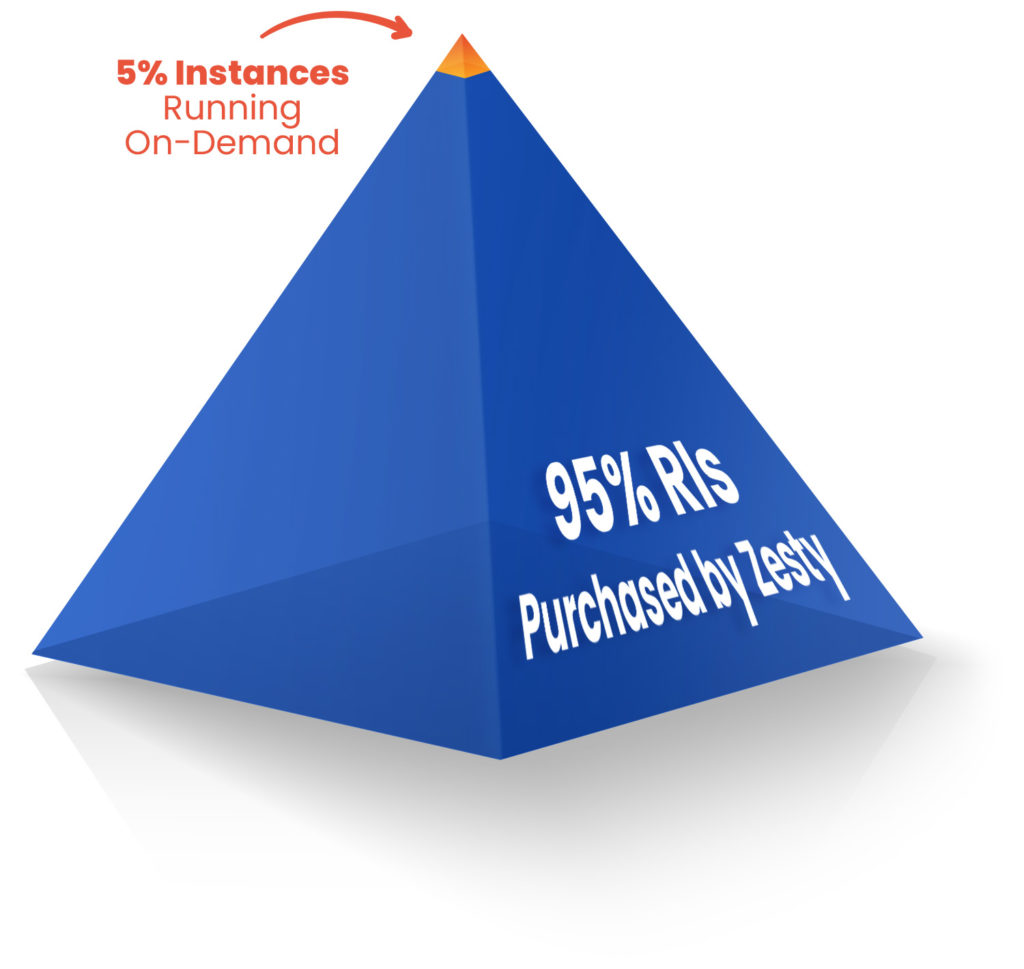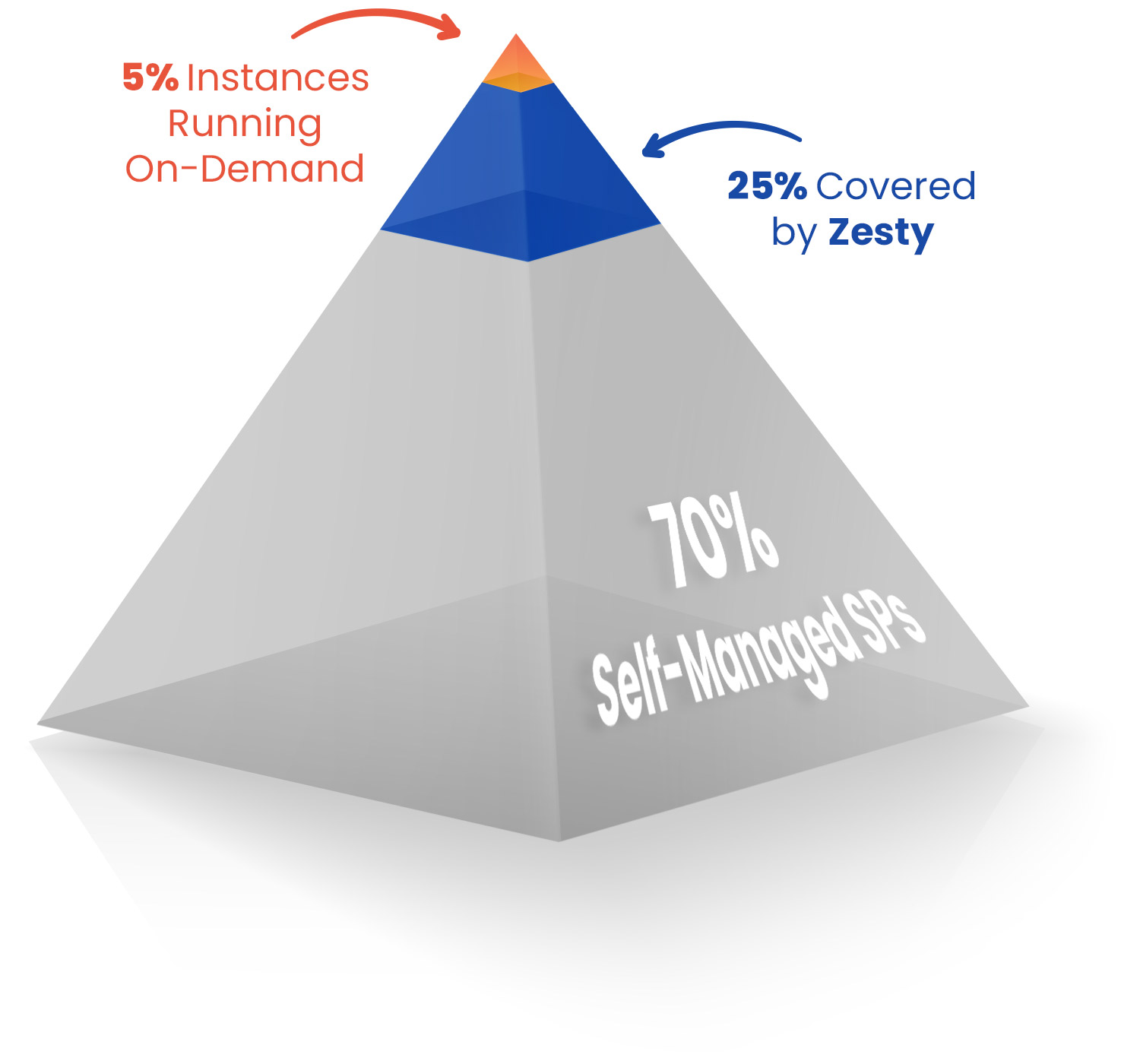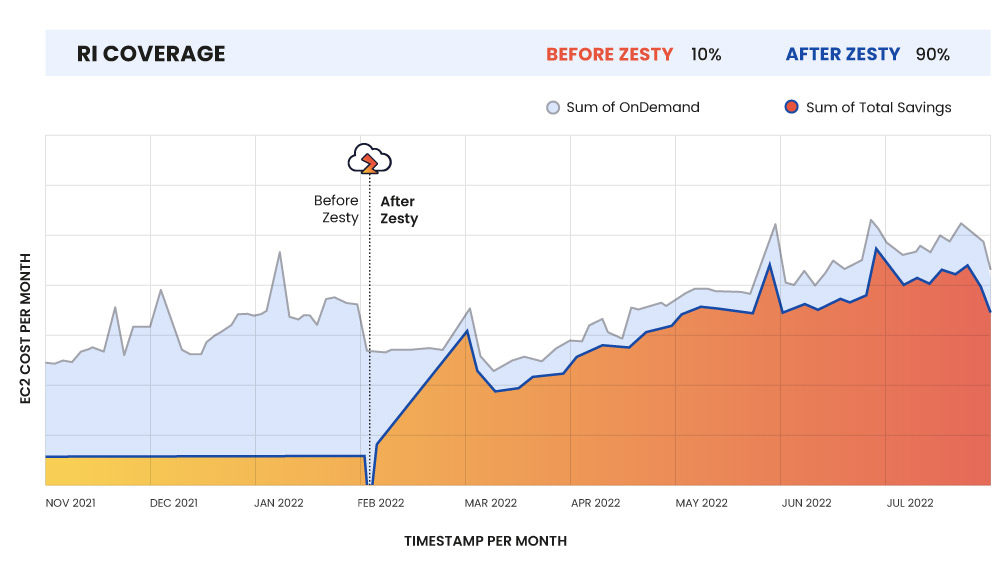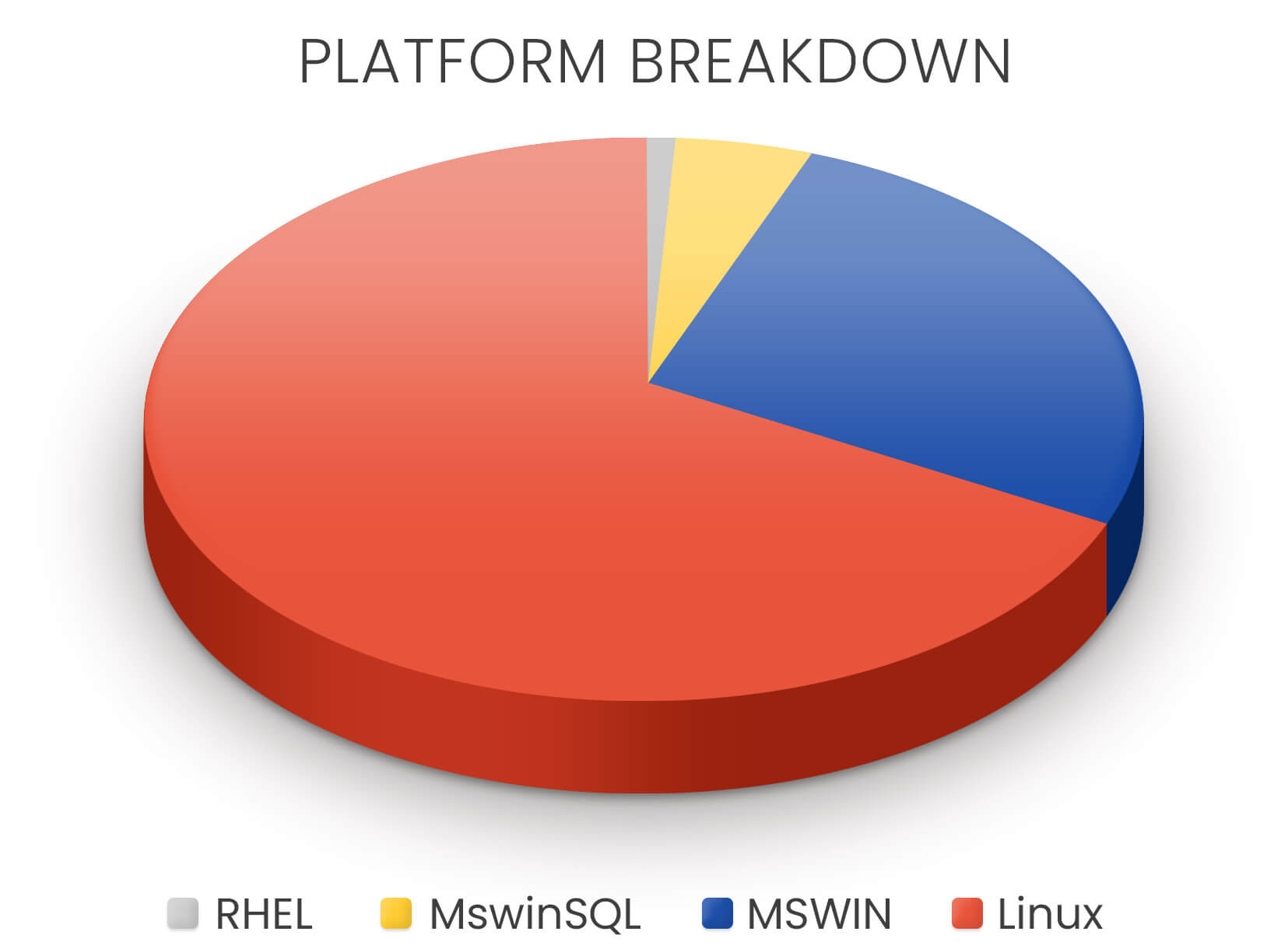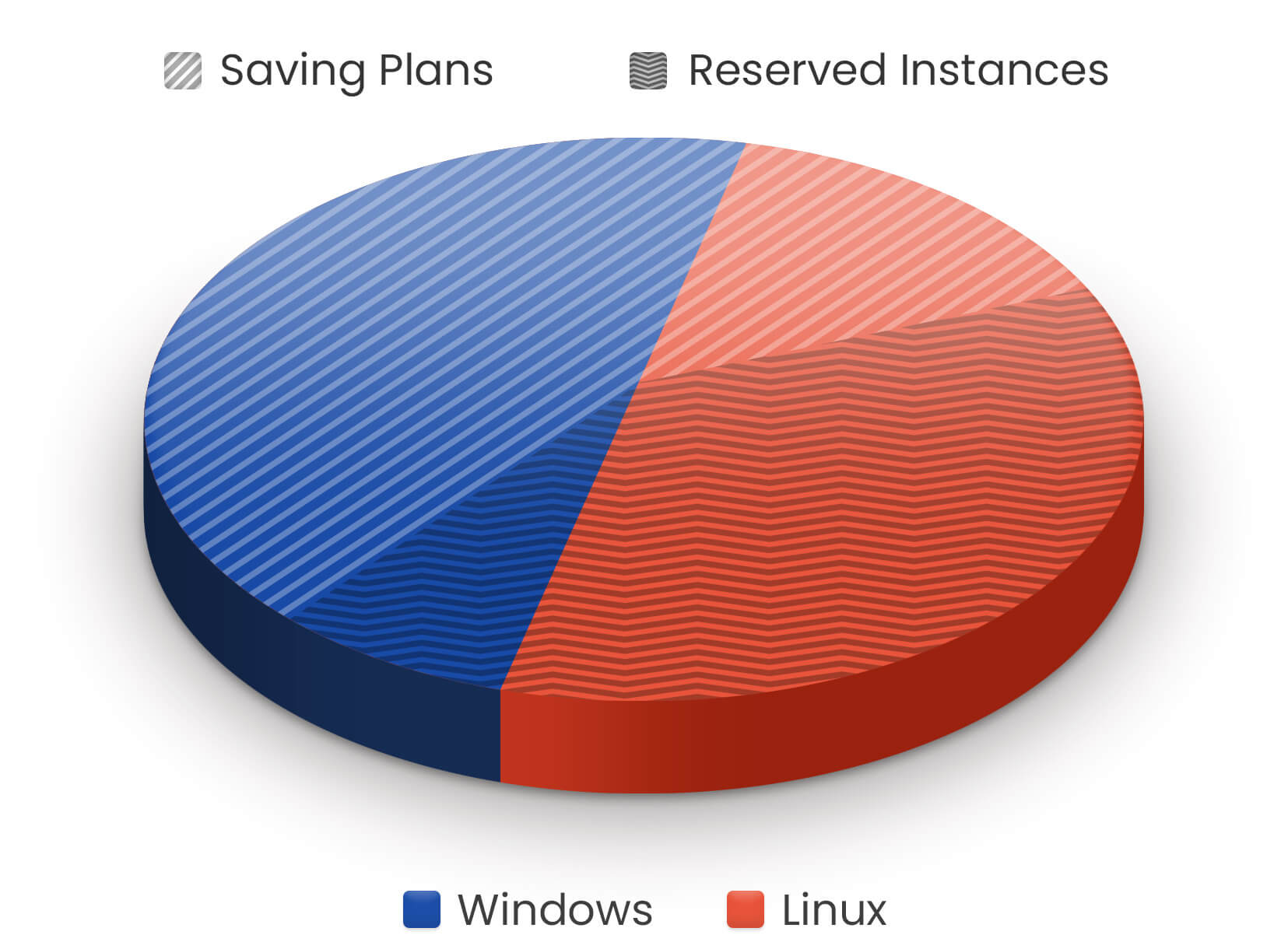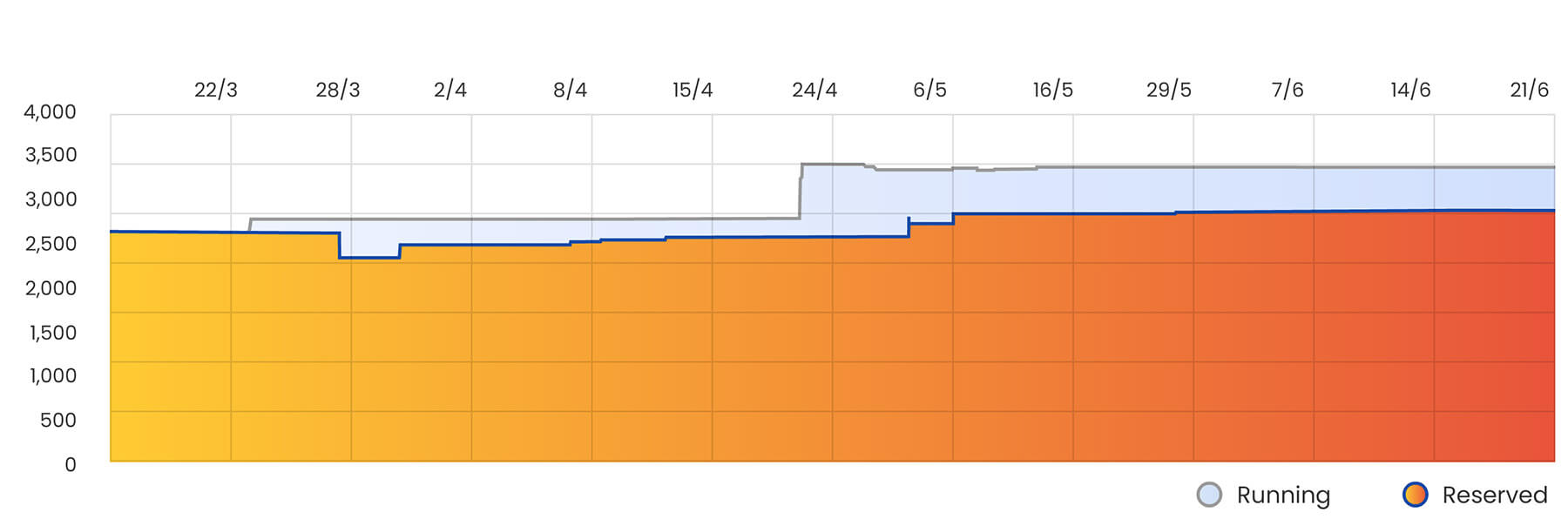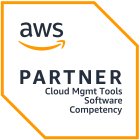
Better Together: How to Use Zesty with AWS Long Term Discount Offerings to Boost Cloud Savings

Senior Content Manager
AWS discount offerings and Zesty’s dynamic capabilities may just be the ultimate combination for cloud users looking to cut costs and stay efficient on AWS. While you can use Zesty without any discount program in place, it can also be the perfect addition, enabling you to leverage even greater savings and flexibility.
From Reserved Instances, to Savings Plans, AWS offers a variety of options for customers looking to implement cost savings on EC2.
However, each of these options have restrictions. Some require you to commit to a specific region or OS. Others require you to stick to a specific instance family. Plus, many of these savings programs require you to commit 1-3 years in advance, meaning that once you select it, you will need to have enough workloads that meet its parameters over the course of the next few years.
With all these specifications, it becomes difficult to allocate all of your workloads to a savings program. And that’s exactly where Zesty comes in.
Zesty leverages the cost savings of 3-year long Reserved Instances by using dynamic technology that automatically scales resources to real-time demand without locking you into instance types that may not be relevant to you as your application needs shift. As a result, you get more of your instances covered with discounts, and all the savings to show for it.
In this article, we’ll provide a series of use cases of how you can use AWS discount offerings and Zesty together for maximum savings and minimal effort.
Use Case #1 - Running Purely On-Demand
If you have highly volatile workloads that are difficult to predict, On-Demand Instances may seem like your only option as they enable you to purchase the instance type you need exactly when you need it. But this flexibility comes at a cost.
If you’re using instances On-Demand, you’re paying a premium to use instances at their full retail price. For example an M6.2xlarge may only cost you roughly 50c for the hour, but if you have hundreds of those instances running throughout the year, that 50c will race up very quickly to potentially hundreds of thousands of dollars per year.
Instead of spending tons of money running on On-Demand instances to address changing application needs, you can cover them with Zesty Reserved Instances (RI) to ensure those workloads heavily discounted, in some cases by as much as 60%.
Because Zesty’s technology can automatically buy and sell RIs to meet your real-time demand, you get the flexibility of On-Demand along with the cost savings of RIs without any requirement to manually calculate and predict your usage in advance.
Take note, that workloads that have fluctuation but a relatively stable state of at least 30-days are an ideal candidate for Zesty’s Commitment Manager. This constitutes 95% of workloads. But, for workloads that are extremely volatile, it’s best to leave them running On-Demand. For most businesses, this constitutes only a small percentage of their workloads.
Use Case #2 - Covering the Delta
Savings Plans (SP) are an extremely popular AWS discount instrument for organizations looking to cut costs on EC2 and compute services. They are versatile, suitable for multiple types of workloads ranging from serverless functions, Windows, Linux, and more. Plus, if you use Compute Savings Plans, you’re not locked into a particular region or instance family and you have no OS limitations.
However, there is a downside of provisioning all your workloads to SPs. Because they require a commitment of 1 to 3 years, you risk being overprovisioned should you not have the workloads to justify them. To avoid this situation, most organizations are comfortable with the risk point at 70-80% coverage with SPs and run the remaining 20-30% On-Demand.
Overall, this is a great strategy, but utilizing Zesty can make it even better.
Say you put 70% of your workloads on SPs and the remaining 30% is running On-Demand, you are still paying a premium for that 30% – and that can add up to a large sum on your AWS bill.
Instead, Zesty can cover a large percentage of the remaining On-Demand workloads, by automatically purchasing 3-year no upfront standard RIs on your behalf, leaving only the most highly volatile instances running On-Demand. As a result, most instances that couldn’t be covered at all, are now covered by Zesty with a 30-day commitment, rather than a 3-year commitment.
Best of all, once you implement Zesty, we’ll make sure all the SPs you’ve already paid for are utilized. By default, AWS first allocates discount instruments with the greatest value before it allocates discounts of lesser value. Because RIs provide a greater discount than SPs you’d normally run the risk of provisioning RIs before you’ve used up all your existing SPs. At Zesty, we’ve made sure that RIs don’t engulf workloads from a lower priority commitment, so you get full utilization of all your Savings Plans.
This brings us to our next use case about how Zesty can help you save more by turning your expiring SPs into Zesty RIs.
Use Case #3 - Apply Zesty as Commitments Expire
Many of Zesty’s customers start using the solution with previously purchased Reserved Instances and Savings Plans which are still active. Eventually, those commitments expire and once they do, those customers typically let Zesty automatically cover those expiring commitments.
For this to happen, the customer simply defaults to On-Demand once their commitments expire. Zesty automatically identifies and covers all of those On-Demand instances with Zesty RIs and the savings kick-in immediately.
Many of Zesty’s customers choose to do this to leverage greater savings and greater flexibility. For example, if an organization uses one year SPs, turning them into Zesty RIs will provide them with nearly a 57% discount instead of the 27%-37% discount they’d achieve with SPs alone.
In these volatile times when it’s hard to predict what the future has in store, Zesty can take over three year commitments since our discounts are the same or higher than it is with AWS, and commitment is significantly less.
Best of all, because of Zesty’s AI engine that simultaneously measures your real-time application needs, you get exactly what you need when you need it.
Use Case #4 - Shift SPs to Non-Linux Workloads to Maximize Discounts
Most of our customers present a diversified workload that uses a variety of different family types (ideal for convertible RIs) and an array of infrastructure ranging from Windows OS, RDS & Serverless amongst others.
Let’s say 50% of your instances are running on Linux and the other 50% are on Windows and you have 60% of the combined total covered with SPs. Most likely, the SPs you have purchased through AWS will cover the Linux instances first since AWS provides better discounts for Linux. The remaining instances will run On-Demand.
When you bring Zesty into the mix, we’ll automatically buy RIs to cover your remaining On-Demand Linux-based Instances, providing greater savings than the SPs you’ve previously purchased. Then, any Windows, RDS or non-Linux RIs will shift to be covered by the SPs you’ve already purchased. As a result, you get more of your entire workload covered with discount offerings, resulting in significantly more savings*.
If re-adjusting discount allocations to workloads sounds like too much to do manually, Zesty can help you identify relevant workloads and onboard you to our platform in no time.
Recommendations for Specific Workloads
Steady-State Workloads
If you have stable workloads that you can run with a steady number of instances, you’re in an ideal situation for utilizing commitments (either RIs or Savings Plans).
But if you choose to use Savings Plans in this scenario, you’ll need to constantly review these workloads as they go up and down. This means, you’ll need to talk with various teams within your organization to understand how long these workloads are needed, purchase new commitments, and commit for 1 to 3 years depending on your business needs. By using Zesty on the other hand, no review is necessary and all allocations can be sold off as changes occur.
Autoscaling
If you have spikey workloads that surge at peak hours, it’s ideal to put these workloads on Spot Instances, AWS’s offering for unutilized capacity. While Spot Instances offer a 90% discount off On-Demand, AWS reserves the right to withdraw these instances with just a two minute warning and allocate them to another customer who is willing to pay full price.
This makes them less ideal for mission-critical applications, but perfectly suited for temporary spikes in capacity. Another risk associated with Spot Instances is that if there’s a shortage of instances in the market, you risk winding up with nothing at all. Therefore, you should avoid putting your entire workload on Spot.
To maximize savings and guarantee a baseline supply of instances, put the relatively stable workloads on Zesty, so you can automatically leverage RI discounts without spending any time and effort calculating predictions.
Final Words
As you grow on AWS, cost efficiency becomes increasingly critical. Once you have more customers, more products, and more features it’s easy for costs to get out of control and become a real problem for your organization’s bottom line.
While AWS takes their customer’s need for cost efficiency seriously by offering an array of options to cut costs, users often find these programs challenging to work with.
Zesty helps to make AWS savings programs more accessible by eliminating the need to predict usage. Our automation makes all the predictions for you, so you can continue to save as you scale without any human input whatsoever.
With Zesty plus AWS discount offerings, you can rest assured you’re getting the best price with the greatest flexibility, enabling you to run dynamic cloud infrastructure without the high price tag.
For more information and to see Zesty in action, contact one of our cloud experts.

Related Articles
-
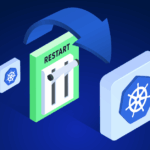 Zesty now supports In-Place Pod Resizing for Seamless, Real-Time Vertical Scaling
Zesty now supports In-Place Pod Resizing for Seamless, Real-Time Vertical Scaling
July 30, 2025 -
 Kubernetes Updates – June
Kubernetes Updates – June
July 16, 2025 -
 The endless cycle of manual K8s cost optimization is costing you
The endless cycle of manual K8s cost optimization is costing you
July 2, 2025 -
 Kubernetes Updates – April 2025
Kubernetes Updates – April 2025
May 21, 2025 -
 Kubernetes Updates – March 2025
Kubernetes Updates – March 2025
April 23, 2025

